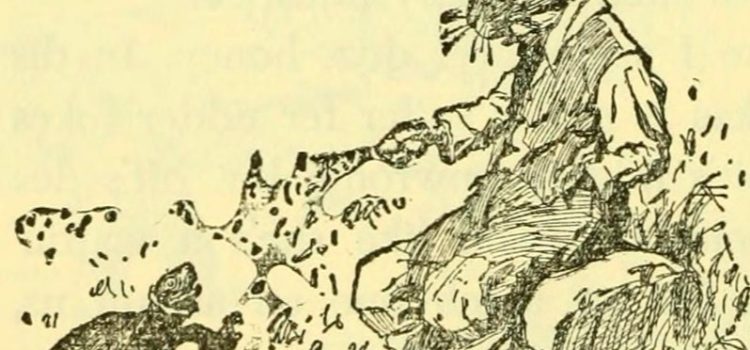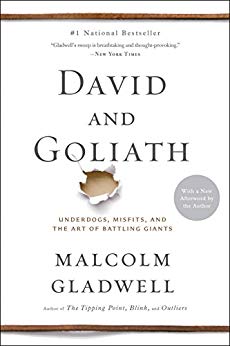

This article is an excerpt from the Shortform summary of "David and Goliath" by Malcolm Gladwell. Shortform has the world's best summaries of books you should be reading.
Like this article? Sign up for a free trial here .
Who is Brer Rabbit? And why is he so important to the history of the Civil Rights Movement?
Brer Rabbit is a popular character in Southern lore who uses his wits to outsmart characters who are stronger and more powerful than he is.
We’ll cover how the Brer Rabbit stories inspired the leaders of the American Civil Rights Movement, and what you can learn from both the stories and the movement.
Brer Rabbit—Having Nothing (and Nothing to Lose)
In a fair world, everyone could follow the conventional rules of the game and win. In the world we have, however, perpetual underdogs occasionally need to break the rules to succeed. To do so, they need to be “disagreeable” in the sense that they can’t care what others think.
Brer Rabbit was disagreeable in this way. He played the game his own way. This was his advantage. If you have an abundance of wealth, status, and material goods, you risk all of it when you play by your own rules rather than society’s. You’re constrained. You have everything to lose.
But if you have very little and you’ve been neglected (or worse) by society, like Brer Rabbit, you don’t have anything to lose by bucking tradition and going your own way. This gives you a freedom that those with more to lose don’t have.
The Lesson of the Brer Rabbit Stories
This is the lesson of the Brer Rabbit stories: When the conventional way doesn’t work, try something unconventional. For instance, the leaders of the American Civil Rights Movement had to play by their own rules with Project C because society’s rules didn’t work for them.
Martin Luther King, Jr., and many Civil Rights activists, came from a community that had been enslaved and oppressed for hundreds of years. Being an underdog community for centuries was a clear disadvantage to its members. But it also taught them how to operate as underdogs and win. African Americans were not respected by the societies they sought to transform. They couldn’t lose a respect they never had. This made them freer in their strategies than their opponents.
Leaders of the Civil Rights Movement like Wyatt Walker, the executive director of King’s Southern Christian Leadership Conference, took inspiration from the “trickster” tales passed down through generations. The Brer Rabbit stories, a subgenre of the trickster tale, depict an underdog (Brer Rabbit) using his wits to outsmart characters who are bigger and stronger than he is. Walker’s strategy for fighting racism in Birmingham is a powerful real-world example of the use of trickster techniques to outsmart Goliath. Walker was inspired by the Brer Rabbit stories.
Walker devised a plan for Birmingham called Project C (“C” for confrontation). The last stage was a series of marches devised, in part, to fill up the jails with protesters. Jailing marchers was one way to smother the “civil rights problem,” but what would Goliath (in this case, public safety commissioner Bull Connor) do when all the jails were full? He would have to deal with the protesters directly.
The success of Walker’s plan depended on getting Bull Connor to fight back. The hope was that if they could get Connor to blatantly mistreat protesters, the news coverage would generate sympathy for the movement across the nation and in the government.
Connor didn’t want King’s marchers to cross into “white” Birmingham, and he would do anything in his power to keep them from doing it. Walker and King knew this about Connor. They also knew that Connor was itching for a fight. Walker’s plan was classic Brer Rabbit—figuring out what the enemy wanted more than anything and then using that knowledge to bait him.
Three Brer Rabbit Tricks that Worked
Brer Rabbit Trick #1: The March with Imaginary Protesters
Many Blacks in Birmingham worried (justifiably) that they would lose their jobs if they marched with King. Walker couldn’t get people to show up.
This first trick was actually a felicitous mishap: Walker and his 22 marchers were scheduled to march at 2:30, but were delayed until 4. By the time they started marching, thousands had shown up to watch the demonstration. The next day, confused journalists reported that eleven hundred demonstrators had marched. Inspired by this unexpected success, Walker thought like Brer Rabbit and scheduled future marches for the late afternoon, when many people were leaving work and available to form an audience. The papers continued to report that thousands were demonstrating in the streets, when only a couple dozen of the crowd were actual protesters.
Meanwhile, Bull Connor was taking the bait. He decided he wasn’t going to let the marchers reach city hall. As long as Connor gave them restrictions to push against, Walker would have the publicity and momentum to keep the movement alive in Birmingham. The Brer Rabbit move was working.
Brer Rabbit Trick #2: Getting Connor to Put Children in Jail
A month into the plan’s execution, members of Walker’s team used leaflets and the radio to encourage kids to show up to a “party” at a Baptist Church. The kids knew that “party” was code for “demonstration.”
Bull Connor threatened expulsion for any child who skipped school, but the kids still came. Walker’s team sent dozens of children out of the church holding signs and singing. Outside the church, the children knelt and prayed, and then passively walked to the police waiting to take them to jail. More than 600 kids ended the day in jail. It was not a good look for the Birmingham police. Again, Connor had fallen into Brer Rabbit’s trap.
Brer Rabbit Trick #3: Getting Connor to Turn on the Hoses and Bring Out the Dogs
The next day, 1,500 children showed up at the church to protest.
Connor called in both the police force and firefighters to combat the protesters. True to a previous threat, he also brought police dogs.
The jails were already full. Walker knew that if Connor sensed the protest getting out of control, he wouldn’t be able to resist using all the resources he had summoned. Walker wanted Connor to use them. He knew how it would look to northerners if a newspaper published a picture of the Birmingham police setting dogs on children.
As the children pressed closer to the police barricade, Connor ordered the firefighters to turn their hoses on them. He also called in eight K-9 units to keep the protesters from crossing into “white” Birmingham. One photographer snapped a picture of a dog lunging at a fifteen-year-old boy. It was a picture that turned the tide of the movement. Congress passed the Civil Rights Act of 1964 a year later.
(The boy photographed was actually a spectator, not a marcher. He also wasn’t a martyr, practicing non-violent resistance by passively letting the dog attack him; in the picture, he’s kneeing the dog in the chest. The officer was not actually siccing the dog on the boy; he was trying to restrain the dog. Trick #3 was extra tricky because the photograph wasn’t even depicting the brutality that Walker had hoped for. But Walker, a true Brer Rabbit, used what was handed to him.)
Brer Rabbit Inspiration
How did they come up with these “tricks”? They were inspired by the Brer Rabbit stories.
- King, Walker, and their team had nothing to lose. They had few material goods and no dependable rights.
- They were also desperate. They had nothing else to use. Conventional tactics hadn’t worked, so tricks were their only option. They also turned out to be effective.
But wait – Walker was pushing for police brutality against children. Isn’t that wrong?
Perhaps morality is just a name for the rules that Goliaths play by. Like Brer Rabbit, Walker didn’t have any other options. The conventional, “moral” ways were not effective against the white giant and his racism. If the world isn’t fair, are you required to play fair?
Walker said later that he had no choice when he resorted to using children in his marches. He pointed out that Bull Connor was not moral, and therefore couldn’t be fought using “moral” methods.
Underdogs are not naturally tricky. Like Brer Rabbit, they become tricky out of necessity.
———End of Preview———

Like what you just read? Read the rest of the world's best summary of "David and Goliath" at Shortform . Learn the book's critical concepts in 20 minutes or less .
Here's what you'll find in our full David and Goliath summary :
- Why being the underdog can actually be an advantage
- Why you shouldn't be afraid of powerful giants
- Strategies to get an edge when you're overpowered






